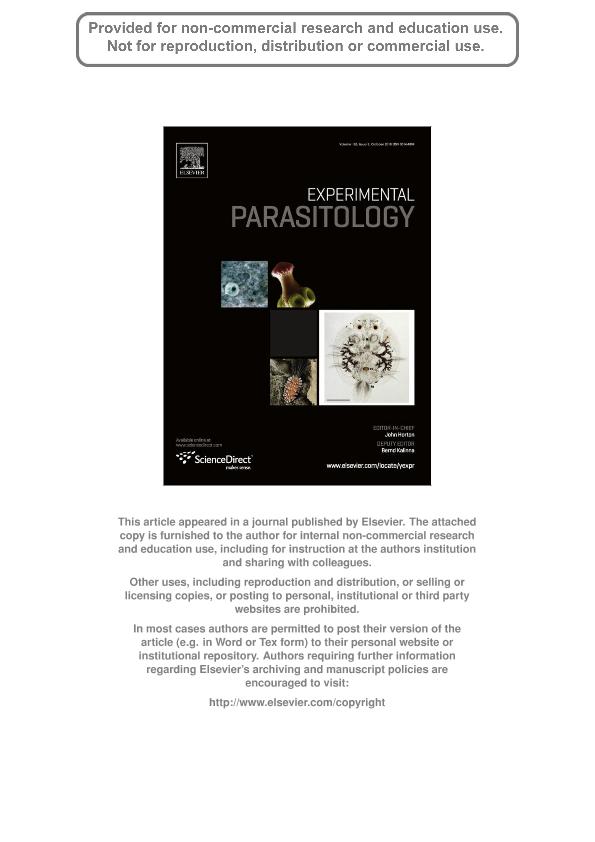Artículo
Trypanosoma cruzi: Biological characterization of a isolate from an endemic area and its susceptibility to conventional drugs
Grosso, Noelia Lorena ; Bua, Jacqueline Elena
; Bua, Jacqueline Elena ; Perrone, Alina Elizabeth
; Perrone, Alina Elizabeth ; González, Mariela Natacha
; González, Mariela Natacha ; Bustos, Patricia Laura
; Bustos, Patricia Laura ; Postan, Miriam
; Postan, Miriam ; Fichera, Laura Edith
; Fichera, Laura Edith
 ; Bua, Jacqueline Elena
; Bua, Jacqueline Elena ; Perrone, Alina Elizabeth
; Perrone, Alina Elizabeth ; González, Mariela Natacha
; González, Mariela Natacha ; Bustos, Patricia Laura
; Bustos, Patricia Laura ; Postan, Miriam
; Postan, Miriam ; Fichera, Laura Edith
; Fichera, Laura Edith
Fecha de publicación:
10/2010
Editorial:
Academic Press Inc Elsevier Science
Revista:
Experimental Parasitology
ISSN:
0014-4894
Idioma:
Inglés
Tipo de recurso:
Artículo publicado
Clasificación temática:
Resumen
We describe some biological and molecular characteristics of a Trypanosoma cruzi isolate derived from a Triatomine captured in Nicaragua. PCR based typification showed that this isolate, named Nicaragua, belonged to the lineage Tc I. Nicaragua infected culture cells were treated with allopurinol, showing different behavior according to the cellular compartment, being cardiomyocyte primary cultures more resistant to this drug. The course of the infection in a mice experimental model and its susceptibility to benznidazole and allopurinol was analyzed. In benznidazole treatment, mice reverted the high lethal effect of parasites during the acute infection, however, a few parasites were detected in the heart of 88% of mice 1. year post-infection. Since T. cruzi is a heterogeneous species population it is important to study and characterize different parasites actually circulating in humans in endemic areas. In this work we show that T. cruzi Nicaragua isolate, is sensitive to early benznidazole treatment.
Palabras clave:
ALLOPURINOL
,
BENZNIDAZOLE
,
ISOLATE LINEAGE IDENTIFICATION
,
TRYPANOSOMA CRUZI
Archivos asociados
Licencia
Identificadores
Colecciones
Articulos(SEDE CENTRAL)
Articulos de SEDE CENTRAL
Articulos de SEDE CENTRAL
Citación
Grosso, Noelia Lorena; Bua, Jacqueline Elena; Perrone, Alina Elizabeth; González, Mariela Natacha; Bustos, Patricia Laura; et al.; Trypanosoma cruzi: Biological characterization of a isolate from an endemic area and its susceptibility to conventional drugs; Academic Press Inc Elsevier Science; Experimental Parasitology; 126; 2; 10-2010; 239-244
Compartir
Altmétricas



